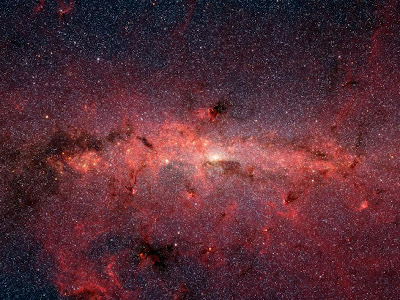Arp 147 contains the remainder of the spiral galaxy (right) that collided with an elliptical galaxy on the left. This collision has resulted in expanding wave of starformation appears as a blue ring contains an abundance of new stars are quite large. This star races have gone through their evolution in a few million years orless and explode as a supernova, leaving behind neutron stars and black holes.
A fraction of neutron stars and black holes will have a companion star, and can be a source of bright X-ray. The nine X-ray sources scattered around the ring in Arp147 is so bright and they have become black holes, with masses of perhaps ten ortwenty times that of the sun.
An X-ray source was also detected in the core area of the red galaxies on the leftand can be powered by supermassive black holes. This source is not apparent onthe composite image, but can easily be seen on X-ray images. Another thing that is not associated with Arp 147 is also visible: the foreground star at the bottom leftimage and the background quasar as a source of pink on the top and left of the redgalaxies.
infrared observations by NASA's Spitzer Space Telescope and ultravioletobservations with NASA's Galaxy Evolution Explorer (GALEX) has allowedestimation of the rate of star formation in the ring. These estimates, combined with the use of models for binary star evolution has allowed the authors to conclude thatthe most powerful star formation may have ended about 15 million years ago, inEarth's time frame.



